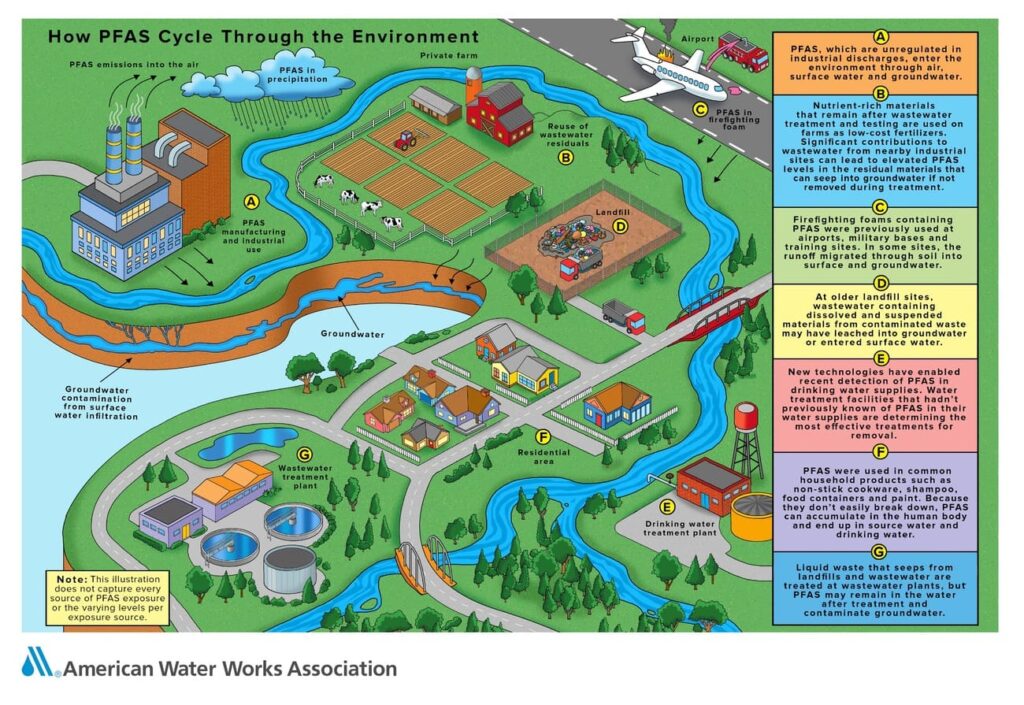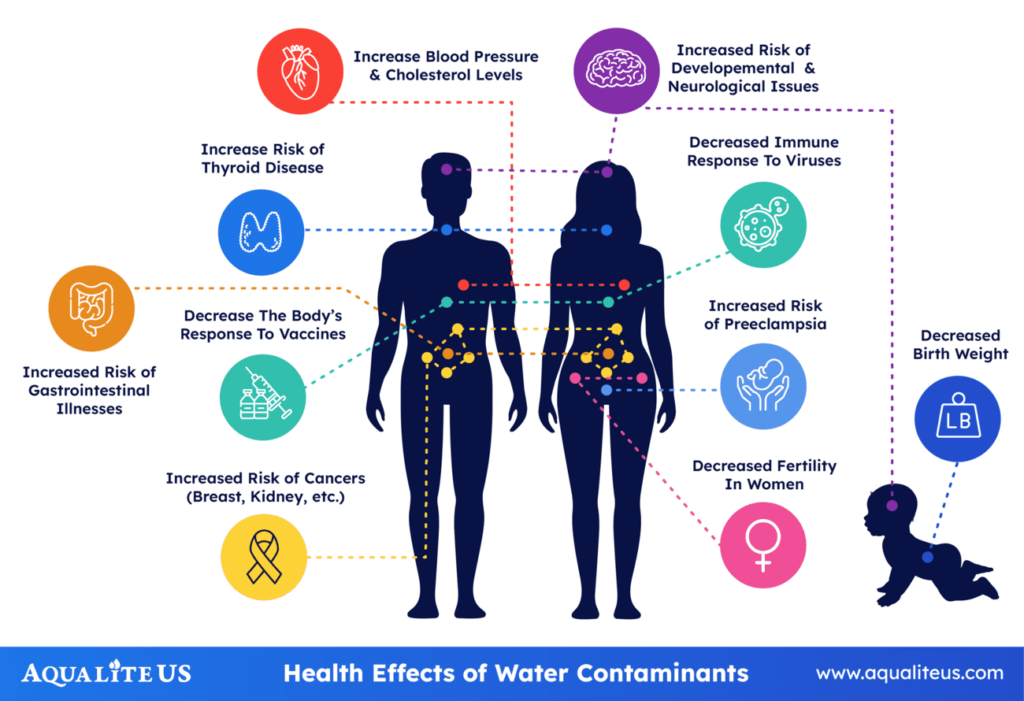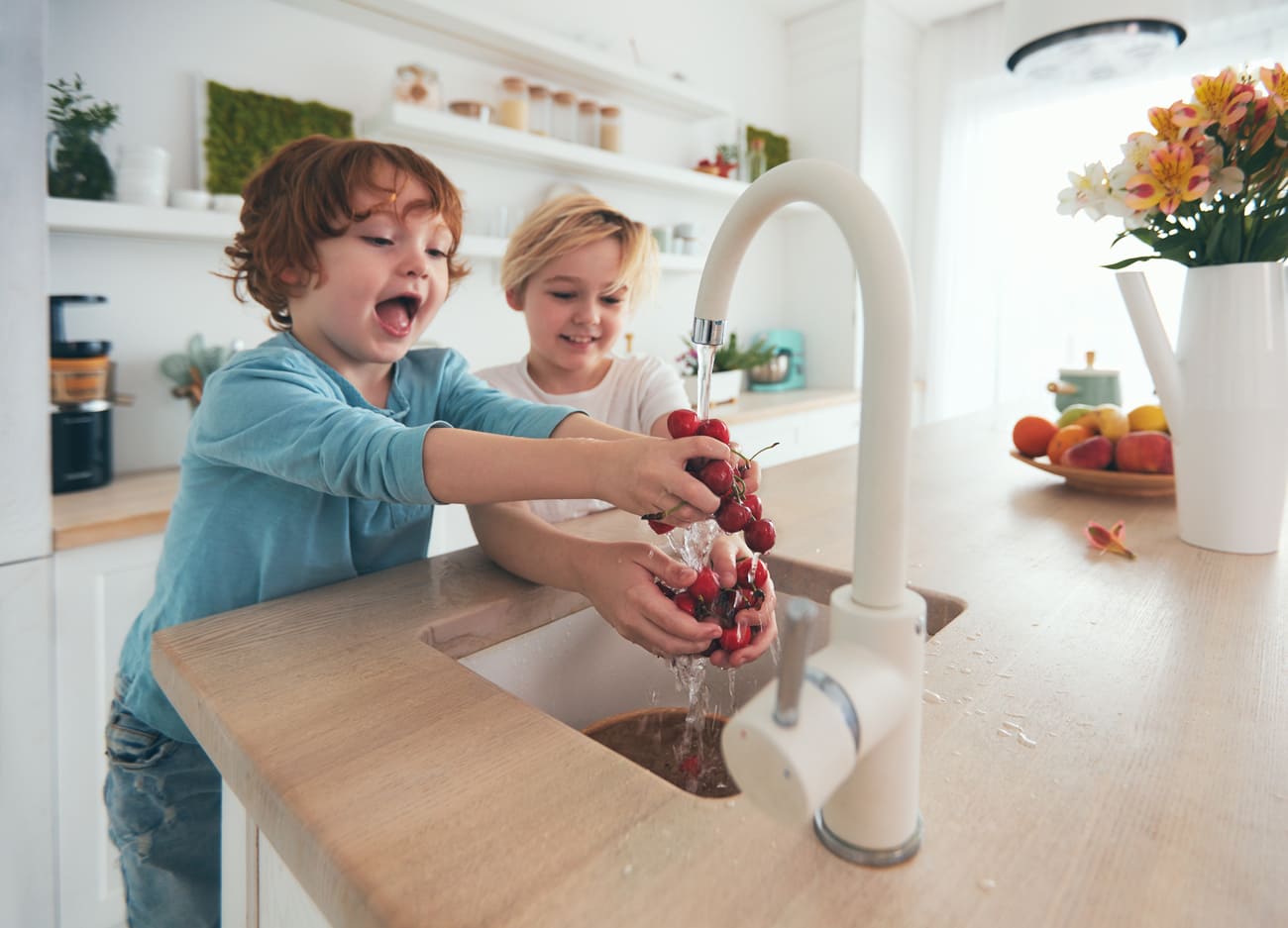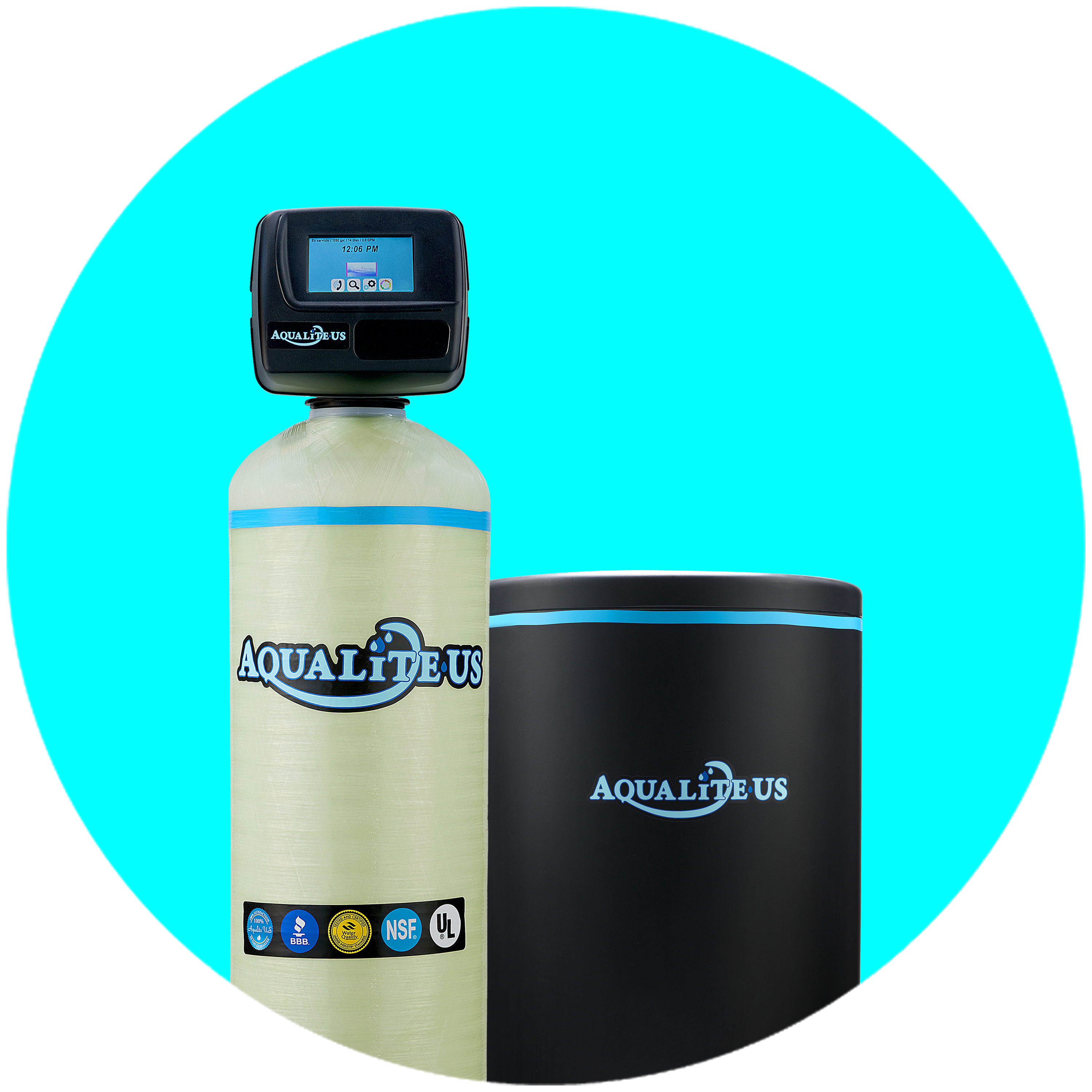Learn why whole-home water purification can ensure your family has access to safe water.
When purchasing a new home, ensuring you have clean drinking water isn’t guaranteed. Contamination due to poor well filtration, pipe corrosion, or issues with municipal water can plague the drinking water in your home and risk your family’s health.
It’s time you take a hard look at the drinking water in your home, understand the possible water contaminants, and how implementing a whole home water filtration system can provide safe and clean water throughout your home.
Importance of Ensuring Safe Water With Water Purification
Public water is treated at local water treatment plants based on the Safe Drinking Water Act standards, and as a result, you may think your municipal drinking water is safe. Unfortunately, as was demonstrated in Flint, Michigan, we can’t always trust the municipal water system to guarantee clean water.
According to a Natural Resource Defense Council (NRDC) report, nearly 77 million Americans get their drinking water from systems that violate federal water protections (2015). These numbers drastically understate the extent of poor water quality in American homes.
Even if your water looks, smells, or tastes okay, it often contains contaminants harmful to health, exacerbating health conditions in sensitive groups like children, pregnant individuals, and weakened immune systems.
Activated carbon filters, ion exchange units, distillation units, and reverse osmosis units are the only way to guarantee cleaning drinking water for you and your family.
Top 7 Common Contaminants Found in Municipal Water
Without a water filtration system in place, your family could be drinking any of these common water contaminants:

#1) Lead
Lead can leech into your water supply via old, corroded lead pipes and new brass plumbing fixtures, a leading contaminant in home water systems. Lead exposure can cause damage to the brain and nervous system, slowed growth, and behavioral and learning problems.
#2) Atrazine
Atrazine is another common contaminant and is a known endocrine disruptor. Atrazine is common in pesticides used to kill weeds and is the most common contaminant in the southern U.S. and the midwest. Atrazine exposure has been linked to premature birth, cancer, and birth defects.
#3) Perchlorate And PFOA/PFOS
A widespread toxic chemical, perchlorate, is used in explosives, road flares, and rocket fuel. It can severely disrupt hormones but has been detected in at least 26 states where no federal standard exists for perchlorate in drinking water. PFOA/PFOS are other common legacy contaminants common in American tap water.
#4) Chlorine Treatment By-products
Municipal water supplies are treated with chlorine for disinfection; unfortunately, chlorine treatment leaves a by-product, including trihalomethanes and haloacetic acids. These can cause cancer and reproductive problems depending on the quantity.
#5) Arsenic
Yes, you read that right. Arsenic, the common poison, is often found in drinking water. The Environmental Protection Agency (EPA) estimates that nearly 36 million Americans drink water with arsenic above the recommended level for health (3 parts per billion).
#6) Nitrates
Nitrates are another common water contaminant since they are often naturally occurring in soil and plants. Unfortunately, nitrates are also used in higher levels for fertilizer, and if leeching into your water at a rate higher than ten parts per million, it could be harmful to your health. This could contribute to pregnancy issues and blue baby syndrome.
#7) PFAS
Per-and polyfluoroalkyl substances (PFAS) have been a group of thousands of manufactured fluorinated chemicals since the 1940s. Due to their chemistry, PFAS tend to be heat, water, and oil resistant. This has led to their use in various industrial and residential applications. As of result of their widespread use, they are present in environmental media at trace levels across the globe.

Radioactive Contaminants
While naturally occurring, radioactive elements can find their way into the drinking water. Unfortunately, exposure to radioactive elements can lead to cancer and kidney failure.
Vinyl Chloride
Vinyl chloride is used to make PVC plastic provides; so if you use PVC piping as your home’s plumbing, you are more likely to have vinyl chloride contamination.
Drinking-Water Quality
Making Sure your drinking water is safe seems like an undertaking and can even seem scary after reading the information above. After all, you want to assume your water is safe, but it may not be, and in fact, many toxic chemicals can lurk in your water supply.
Should I Buy Bottled Water Instead?
Many homeowners consider buying water bottles, but this harms the environment and costs you monthly. Bottled water also has health concerns, so there’s no way of knowing if your bottled water is safer than your tap.
Most bottled water is actually tap water, about sixty-four percent by some estimates. Many bottled water brands repackage tap water as bottled water and sell it at a higher markup. Also, Bottled water is way more expensive than tap water. Costs can vary, but in 2016, Food and Water Watch found that one gallon of bottled water costs about $9.50 compared to a half penny for a gallon of tap water.
Is Drinking Tap Water Safe?
A common question homeowners want to know is if their drinking water is safe. If you suspect contaminants in your water and have experienced extreme weather, changes on your property, or are performing annual maintenance. You should test your drinking water to check and see if it is safe.
Any change in your water’s taste, color, or smell is not necessarily a health concern. However, sometimes a change can be a sign of problems. If you notice a difference in your water quality, call your public water system company or local water treatment company for a Free Water Test to determine what water contaminants might be in your drinking water.
Health Effects of Drinking Contaminated Water
If drinking water contains unsafe levels of contaminants, it can cause health effects, such as gastrointestinal illnesses, nervous system or reproductive effects, and chronic diseases such as cancer. Factors that can influence whether a contaminant will lead to health effects include:
- The type of contaminant.
- Its concentration in the water.
- Individual susceptibility.
- The amount of water consumed.
- The duration of exposure.
While some level of contamination in drinking water is expected, too much contamination can lead to health problems. These health problems may be exacerbated in individuals with health conditions who are pregnant or have children. Contaminated water could harm you and your family. It could cause:

- Gastrointestinal disease (cryptosporidium)
- Intestinal disruption in infants (nitrates)
- Physical and mental development problems in infants and children (lead)
- Developmental issues (adults)
- Get Cleaner Water With Water Filtration Units The only way to understand your water quality is to get it tested and then implement the right water filtration system:
- Activated carbon filters reduce specific organic contaminants, chlorination by-products, solvents, pesticides, copper, and lead.
- Reverse osmosis units with carbon can reduce nitrates and sodium and pesticides, fluoride, chloride, and petrochemicals.
- Ion exchange units have activated alumina to reduce minerals such as calcium and magnesium, creating hard water. Ion exchangers are often combined with carbon absorption or reverse osmosis (RO).
- Water softeners reduce minerals from water, creating soft water with fewer hard chemicals.
- Distillation units boil water and condense the steam, creating distilled water.
Invest in a high-quality water filtration system with Aqualite US for a healthy home water system. A common question homeowners ask is, is well water safe to drink? Whether you’re on municipal, city, or healthy water, our water filtration systems can solve even the most problematic water quality issues. Explore the industry-leading technology in our systems. Addressing your water quality problems has never been easier with the best water softener systems available.



